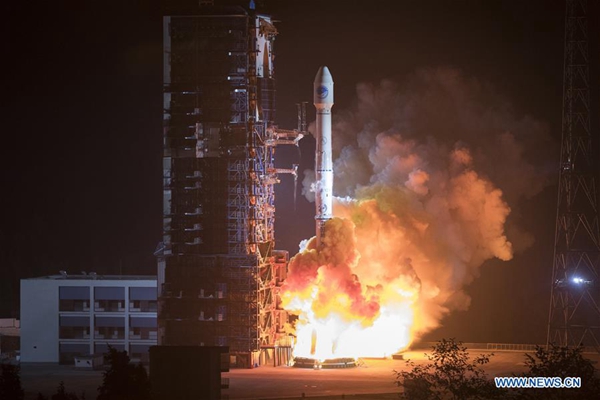China's innovation-oriented progress benefits the world
- By Manisha Chakraborty
 0 Comment(s)
0 Comment(s) Print
Print E-mail China.org.cn, March 20, 2019
E-mail China.org.cn, March 20, 2019

In 2016, China set three targets related to its technological industry: First, to establish itself as one of the most innovative countries by 2020; second, to become a leading innovator by 2030; and third, to become a world-leading science and technology power by 2049, the centenary of the founding of the People's Republic of China.
Two years later, on Jan. 24, 2018, China made history with the first-ever successful cloning of macaques, pushing the boundaries of genetic engineering. China's ascendency in research and development fields ranging from artificial intelligence (AI) technology to biology to 5G mobile data has gripped world attention in recent years.
A global ranking shows China is steadily climbing toward world leadership in innovation. The 2018 Global Innovation Index (GII) placed China at No. 17, up five positions from 2017. The Asian nation's entry to the GII's top 20 most-innovative economies is strong evidence of the country's independent innovative spirit in science and technology supporting economic development.
China in recent years has been a major engine for independent innovation-driven breakthroughs in science and technology. In line with the country's 13th Five-Year Plan (2016-2020), science and technological innovation has been listed among the top agenda of the "Two Sessions" – the annual sessions of the National People's Congress (NPC) and the National Committee of the Chinese People's Political Consultative Conference (CPPCC) – in recent years. This year's event has similarly focused on the implementation of an innovation-driven development strategy to achieve economic and social development targets.
Reflected in the government work report submitted by Premier Li Keqiang on March 5, these targets state that China will follow the concept of innovation-driven development and foster new economic momentum. He also emphasized the importance of independent technological research and development in making the nation more innovative.
On March 11, during the news conference on the sidelines of the second session of the 13th National People's Congress, Chinese Minister of Science and Technology Wang Zhigang further elaborated on China's innovation-driven development toward "making China a country of innovators." After presenting the achievements made over the past years, Wang put forth a list of what more needs to be done before stepping into the rank of top innovative countries by the end of 2020 as planned.
Since 2012, China has been ranked second by the world-leading scientific "Nature Index," but the country still lags behind the U.S. in its overall output of basic research. This shows there is still great potential for China to move up in the field.
China's research investment from the central government has been hovering around 5 percent for a long time, while the figure in the U.S. is 15 percent. As such, while mapping out the country's ambitious plan to become an innovative leader by 2035 and a world powerhouse by 2050, the minister urged Chinese high-tech enterprises as well as local governments to fund long-term basic research. Here it is pertinent to note that technological improvements contributed 58.5 percent to China's economic growth in 2018, which is already close to the 2020 target of 60 percent set by the government.
As the world's second-largest economy, China is now capable of supplying solutions to aid global governance through concrete initiatives like the Belt and Road Initiative (BRI). Technological cooperation with participating countries of the BRI deserves praise. Since Dec. 27, 2018, China's BeiDou Navigation Satellite System has started providing its global services covering the whole China, Asia and the Pacific region and to all participating BRI countries.
China is also setting up technology sharing platforms with ASEAN members, South Asian countries, Arab countries, and central and eastern European countries, according to information released by Wang. These new platforms will build "a community with a shared future for mankind."
In recent years, the world witnessed landmark scientific and technological advancements coming out of China – namely, the 500-meter Aperture Spherical Radio Telescope (FAST), the world's largest single-dish radio telescope; the Dark Matter Particle Explorer, "Wukong" or "Monkey King;" the world's first quantum satellite, "Micius;" and China's first self-developed large passenger plane, the C919.
In an article published by Forbes in April of last year, Michael C. Wenderoth, a professor at IE Business School in Madrid, rightly hailed, "China is innovating faster than you imagine." Truly, China is steadily marching toward becoming an innovation-driven country. It is also willing to work closely with other countries to advance science and technology for the better of all humanity. Thus, the world needs to take an honest and unbiased look at China's innovation-driven development as a benefit to the world.
Opinion articles reflect the views of their authors only, not necessarily those of China.org.cn.






Go to Forum >>0 Comment(s)